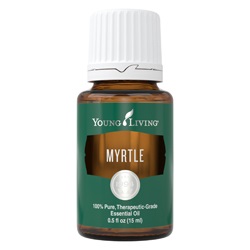TWELVE OILS OF ANCIENT SCRIPTURE: MYRTLE
EDITOR’S NOTE: Since Gary Young’s passing, we have been taking stock of the tremendous contributions he made to the world by revisiting his presentations, such as this fascinating multipart blogpost series called The Twelve Oils of Ancient Scripture. In it, Gary examined the historical significance and traditional uses of frankincense, sandalwood, myrrh, onycha, spikenard, rose of Sharon, myrtle, hyssop, galbanum, cypress, cedarwood, and cassia.
Next up is myrtle, whose intriguing history still has relevance for us today.
Myrtle is another precious aromatic that appears in historical writings.
 When the Jews came out of the Babylonian captivity, King Nehemiah reminded them that the Lord commanded that they gather branches from four trees, including myrtle. Nehemiah 8:15: “Go forth unto the mount, and fetch olive branches, and pine branches, and myrtle branches, and palm branches, and branches of thick trees, to make booths, as it is written.”
When the Jews came out of the Babylonian captivity, King Nehemiah reminded them that the Lord commanded that they gather branches from four trees, including myrtle. Nehemiah 8:15: “Go forth unto the mount, and fetch olive branches, and pine branches, and myrtle branches, and palm branches, and branches of thick trees, to make booths, as it is written.”
To the ancient Jews, myrtle was symbolic of peace and justice. One of the promises to Israel of the future is that instead of the briar shall come up the myrtle tree (Isaiah 55:13).
Ancient texts also mention the use of myrtle for overcoming respiratory conditions, although no clinical research has so far validated this.
Next time join me as I discuss a well-known oil of ancient scripture: Hyssop.
Essentially Yours,
Gary Young

